 There has been a revolution in game publishing lately and that’s the beast known as Kickstarter. We have seen more games than ever come to the market largely thanks to this crowd funding champ. Both first time publishers and long time industry veterans are turning to Kickstarter when releasing a new game. While this opens up more opportunities, it also means there is a lot more competition for a consumer’s gaming dollar. As of the time of this writing there were over 160 active tabletop game campaigns on Kickstarter (via kicktraq). That’s a lot of competition for your gaming dollar and that doesn’t even include games distributed through the normal channels.
There has been a revolution in game publishing lately and that’s the beast known as Kickstarter. We have seen more games than ever come to the market largely thanks to this crowd funding champ. Both first time publishers and long time industry veterans are turning to Kickstarter when releasing a new game. While this opens up more opportunities, it also means there is a lot more competition for a consumer’s gaming dollar. As of the time of this writing there were over 160 active tabletop game campaigns on Kickstarter (via kicktraq). That’s a lot of competition for your gaming dollar and that doesn’t even include games distributed through the normal channels.
After spending a lot of time on Kickstarter over the past year, both as a backer and as a looker, I’ve noticed some good and bad trends in people’s campaigns. I would love to see everyone succeed in bringing their game to the market so I’ve put together some tips for your Kickstarter campaign.
I should preface this by saying I’ve never run a Kickstarter campaign, so I’m not going to talk about campaigns from the publisher’s side (for that, check out the awesome “Kickstarter Lessons” blog by Jamey Stegmaier). What I am going to do is speak from the perspective of a consumer and as a marketer. I have over 15 years of experience working in marketing; I’ve worked at ad agencies, magazine, book and newspaper publishers, eCommerce companies and companies that manage local services. I bring these tips both from my perspective as a marketing professional and as an avid game buying consumer. Do with them what you will.
Also I should note that this article will only be in reference to tabletop game campaigns. While its principles may apply to others venues, that’s not my focus here. Below are about a dozen tips I’ve compiled to help you put your best foot forward in your kickstarter campaign. You don’t have to agree with all of them, but I hope it at least gives you something to think about.
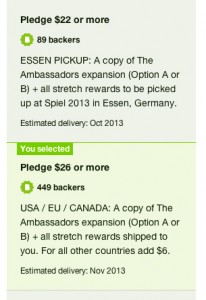
1) Make it easy to find out how to buy the game.
You would think this would be a no-brainer, but you’d be surprised at how many campaigns I have to actively search to find the main backer level that gets me the game. Once interested, the main thing a backer wants to know is how to get your game and how much it costs them. Unless you’ve already sucked them in with your amazing visuals, you have a limited window of time before they get frustrated and leave.
There is an old saying in eCommerce, “Have the least amount of barriers to purchase for the buyer.” Once a buyer shows interest in your product, make it as easy as you can for them to get it. Ever shop on Amazon.com and notice that once you begin the checkout process all of the site navigation disappears? That’s on purpose. They don’t want any distractions to stop you from giving them your money. The same goes for your Kickstarter. The main reason people are there is for your game. Don’t muddy up the waters with tshirts, art prints, coffee cups and other useless items. The pledge level that gets them a game should be one of the first couple of options unless you have a really good reason for those other levels. Keep your backer levels simple and clean.
Good Example: Among the Stars: Ambassadors expansion. They have 6 funding levels, all relevant and clearly described.
2) Photos, Images, Quality art.
I can’t tell you how many campaigns I’ve seen that are nothing but text. These projects rarely seem to make their funding goal. Games are a visual medium. When people hit a campaign page, the first thing they do is scan the page and see what the game looks like. If there aren’t any photos or images of the game, many will move on. People aren’t going to commit to reading a bunch of paragraphs of text to find out if they’re interested in your game.
I’m sorry to say buy most web visitors don’t have that kind of attention span. According to the Nielsen Group, users will often leave a webpage in 10-20 seconds. You want to play it safe? Cut that time in half. That means you have 5-10 seconds to convince a visitor to stay on your page before they leave for another project. The best way to do that is with some high quality images and photos. Walls of text turn people away, they are intimidating and require a time commitment.
I know artists cost money. You don’t have to have your game fully illustrated and finished, but you should have it started. If you don’t believe in your game enough to hire an artist to do some early work, then why should a backer? An image is worth 1000 words, this applies very much so to your campaign page.
Good Example: Kingdom Death. Say what you will about the rest of their campaign, the game itself or the type of images used, there is no question they provided a lot of visuals to draw a visitor in.
3) Campaign Thumbnail
Chances are you weren’t even thinking of this when you started putting together your campaign. Sometimes when people are bored, they will browse kickstarter through the crappy “discover” section. People will scroll through the list of campaigns until something catches their eye. How do they decide what to click through? Well it all starts with the thumbnail. If a campaign image looks professional and attractive, it can cause someone to pause and investigate further. You want to draw people into your campaign. You only get one chance to make a first impression and if your thumbnail looks amateurish, it will affect peoples perception of your campaign. Your thumbnail will be some people’s first impression of you so you should make it count. While the thumbnail probably won’t make or break you, this article is about putting your best foot forward. Take a look at some of the examples below and ask yourself which one is more enticing to you?
4) Independent Review
So you’ve gotten someone to your campaign page and you’ve hooked them with your great looking visuals. But now they want to know if your game is any good. I’ll be honest, I’ve been burned on Kickstarter before. The game look great, the campaign page looked fantastic, but the game played like garbage. True story. So now I want someone to backup your claims. Give me some reviews. It doesn’t have to be Tom Vassel, but it should be someone that’s not you (or a friend).
There are tons of great game review sites out there (a google search for “board game review sites” brings up 294 million results, pick one). Contact some of them early about doing a preview of your game. When I say early, I mean months before launching your campaign. If you try and ask them to review your game a week into your campaign, many will shoot you down. Previews take time and most reviewers have busy schedules.
But a review or preview shouldn’t be optional for you, it’s about building trust. Kickstarter campaigns can be all about trust. The best way to build up trust for your game? Have a few independent people talk about your game and how much they like it. This not only gets your game some much needed validation, but it will have the added benefit of driving traffic to your campaign page from the review sites. Traffic can be the lifeblood of any Kickstarter campaign. You may have an awesome game, but if no one knows it exists you won’t get funded. So being able to build up trust and drive traffic is a double win.
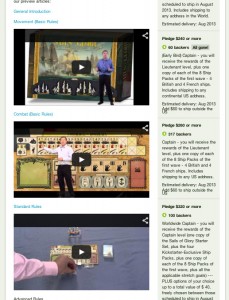
5) Game Play Video
Some people like to be taught games and other people like to read the rulebooks. People who learn by watching want to see a video of your game play. It doesn’t matter if it’s using prototype components or a full on preview copy, they just want to see a few turns being played. This is a great way for new people to get a feel for your game. If your game isn’t at the point where you can do a game play video, they you are not ready to launch your campaign yet.
To add on to that, another reason why you should have a game play video is because Youtube videos are good for search engine optimization (SEO). Youtube is the second largest search engine in the world and it gets over 800 million visitors each month. So not only are you providing a service to your potential backers, you are creating a new avenue for someone to find your project. Someone might type in a related search term on accident, stumble across your video and get hooked. For something you should be doing anyway, why not create another avenue to get backers to your campaign page.
Good Example: The Sails of Glory Kickstarter. They provided a series of well done game videos with increasing complexity and a clever video design. The Galaxy Defender Kickstarter also provided a series of game play videos followed up by some video reviews.
6) Rule Book
Much like #5, this one should be self explanatory. People want to read how to play your game. This is the best way for them to find out the nuts and bolts of your game. It’s OK if your rules aren’t final, but they should be in a state that’s pretty close. If you don’t have your rules close to final at this point (I’m talking the game rules, not the rule book layout), then you are not ready to launch your campaign. Every backer will be looking for your rule book at some point, so it’s a good idea to have it available from the start. People need to know if this is a game they will like. All the pretty pictures in the world are great, but they are useless if the game ends up being terrible. If the rules aren’t there, people are going to assume you’re game is not done yet and much more of a risky bet. I would be willing to bet you will lose a significant number of fence sitters until your rules are posted. I will admit that miniatures game seem to buck this trend as some people will buy games just for the minis.
7) Pricing
I feel like there is a trend for Kickstarter games to get more and more expensive. That makes me a lot more nervous as a consumer. Price is a big factor on when people decide to back a game. Just today I was looking at a game that looks amazing, yet it was $150 to back. $150 is a hard choice to make in a retail store when someone can feel the weight of the final product and know what they are getting. Asking that of someone 6 months to a year in advance for an unknown game is risky and takes a lot of trust.
Only you know your numbers and how much each game costs to make. Make sure your game is priced intelligently and your funding goal is realistic. I’ve seen campaigns fail with funding goals that seemed really off. Know what you need to get your game produced and start there. Then think long and hard about what to price your game at. Make pledges too high and you will price people out of being a backer. Make them too low and you can end up holding the bag. A backer doesn’t know your costs and most probably don’t care. What they do know is the average price for a card game and a board game. You should be in line with those unless you have a good reason not to be. If your eurogame with wooden cubes and cardboard costs $90 to back, then you are probably off your mark. This is a touchy one because no one can tell you your business, but just keep in mind what the consumer is seeing…and your competitors. If there are a dozen card games priced at $25 and yours is $40, backers might choose to spend their money elsewhere.
Good Example: The Dungeon Roll Kickstarter. This was one of the most transparent campaigns I’ve ever seen. They talked about all their costs, the manufacturing element and explained their funding requests fully.

8) Discounts
While we are talking about money, give people a reason to back your game today. If you are selling them the game for MSRP, then you are running the risk that a potential backer will just wait and buy it online later for a cheaper price. There is a lot of competition for someone’s gaming dollars and they want the best value for their money. You’re the publisher. Everyone knows it doesn’t cost you 100% of the sale price to make a game. The very least you can do is give your backers a discount. The cautious person is going to wait until the reviews of the game come out and they can see the final product before buying. But people on the fence can be swayed by a good discount. If a backer is paying MSRP, then they lose some incentive to buy today. It doesn’t even have to be a deep discount, you can sway someone with 10-20% off retail. You should be courting your backers at every turn and a discount is a great way of saying “thanks for trusting me.”
9) Early Bird Discounts
I know they seem to be the norm for campaigns, but think long and hard before doing an early bird discount. Early bird discounts are a bit like playing with fire. Yes, they can convince some fence sitters to back early but and early bird can also turn away people who missed out on them. More then once I’ve passed on backing a game because I missed out on a generous early bird discount. I’m not taking about a $5 discount, that I can live with. But I’ve seen people get games at $70 for the early bird while I’d need to pay $120. Missing out on a 25-40% discount because you didn’t happen to check Kickstarter at the right time is sure to rub people the wrong way.
If you do need to use an early bird, make it for a small amount. 5-10% will give some early backers a treat and not upset a late comer. From a marketing perspective, it becomes question of perceived value. A game may be reasonably priced at $70, but when people see they could have gotten the same product for $40, they see the $30 difference as a waste of money. All of a sudden your $70 game isn’t worth $70, it’s worth $40 and people who missed out on the early bird will feel like they are overpaying. Perception becomes reality. No one wants to pay $70 for a $40 game. You’ve already set a perceived market price with your early bird pricing. Why risk turning away an unknown quantity of backers throughout the life of your campaign just to convert a few people early. It just doesn’t seem worth the risk.

10) Stretch Goals
Are these necessary? Good questions. I know, as a backer, I enjoy them because it gives me something to keep an eye on during the campaign, a reason to stay interested. I feel that it gives people something to root for.
People love to watching something unfold and being able to cheer for it along the way (that’s why professional sports get such good ratings). However, you have to be careful with them. People can sometimes tell when you are pulling things out of the game and releasing them back in as stretch goals. If your backers find out it will create a backlash and you will lose backers. I’ve seen it happen. Stretch goals can be great, but they should be used to make your produce better. Use them to provide upgraded components, alternate parts or other non-game essential items. Now is the time to throw in those art prints or variant cards. Be careful in promising expansions or other unplanned/untested new game elements.
Good example: Euphoria Kickstarter. The stretch goals added nicer components, different product packaging and a few extra pieces. In short, they took the extra money and made the game higher quality.
11) Exclusives
While we are talking about stretch goals, lets talk about Kickstarter exclusives. Here is another risky item. Backers love kickstarter exclusives. Other than a discount off MSRP, this is one of the best ways to get them to back today. It’s a feel good reward for giving you the money early and an incentive to not wait and get it online later. Just be aware that you could alienate some retail buyers down the road when they can’t get ahold of promo cards and minis. Most people are fine with missing out on a Kickstarter version of the game that has better components but still plays the same. Some may get annoyed when they find out there are promo cards or figures that they can’t get.
But this is about your Kickstarter, not the retail channel. We’ve talked about giving people a reason to back today and exclusives are a great way to do it. When combined with stretch goals, it’s a good way to encourage the fence sitters to jump on board. People love to be part of something exclusive and if they know the only way to get this particular card is via your Kickstarter, it will pull at the completionist in all of us. Exclusives can be the carrot in front of a backers face. If they think they only way for them to get this special mini so to back now, it might convince people not to just wait and get it online later.
12) Is your campaign a money grab?
Since we are talking about exclusives and promos, be careful not to turn your campaign into a money grab. Once again, it’s about perceived value. I’ve seen some campaigns half way through their funding period offer a new component for an extra $10. In the case where there doesn’t seem to be any reason why this component wasn’t included in the base game, it just feels like the campaign is trying to milk people for every dollar they have. It’s the same reason video game players hate “Day 1 DLC”. It can feel like you are pulling something out of the game and selling it to the backers later for an extra cost.
You may have reasons for requiring the extra cost. Extra materials, extra development time, paying an artist. I’m sure you have a long list, but many backers won’t care. If you are selling a card game with 80 cards for $20 and then offer an add-on pack for $10 with 5 extra cards, it will set off people’s B.S. radar. If you want add-ons, make sure it makes sense why they are an add-on and not part of the base game. Think long and hard before you do this one. People will leave your campaign if they feel liked they can’t trust you.
Good Example: Teramyyd: Earthsphere Kickstarter. Most of their add-ons were either upgraded game components or extra ones. Nothing a backer felt like was being sold back to them as an add-on.
So there you go. A dozen tips to help make your campaign a success.While you may not agree with all of them, I hope you at least give them some thought. You have a ton of competition now on kickstarter and you want to make sure you stand out.
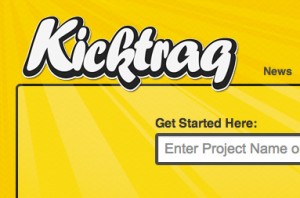
If you want a free bonus tip, get yourself on Kicktraq at the start of the campaign. The site provides extra tools for you as a publisher and you will get a lot more traffic. Many people browse kicktraq when looking for things to back because Kickstarter’s navigation is so terrible.
Think I missed something? Let me know in the comments below.










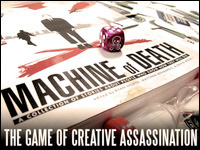


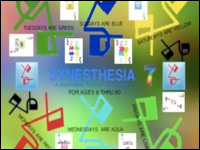














From a non-American point of view, one of the main things I look at is free or reasonable postage to the EU. The risk of getting the game stuck in customs, paying the customs fees and vat barely outweighs the discount of getting it earlier or cheaper than buying it from a shop a few months or weeks later.
For 500 million people (50% speaking good english), it should be worth the investment for the extra backers.
Excellent point Jen, International shipping is important, publishers just need to be aware of the costs involved.
What a good post Tony. thank you.
Re international shipping its not just being aware of the costs involved but actively and early trying to find the cheapest way to get your game to international backers.
Jamey stegmaier http://www.stonemaiergames.com/kickstarter-lesson-12-shipping/ has done some good work on this and i think has an new post on international shipping in the works.
Great article!
Thanks a lot for the work you’ve put into it – a great read for us all 🙂
I’ve put together some lessons learned from my own Kickstarter campaign, you’re very welcome to check it out here: http://www.suntzugames.com/kickstarter-study.html
Have a great day!
Best regards Emil, SunTzuGames
Super helpful information!
I also found that tools like http://www.prefundia.com are SUPER helpful to build a strong following before your project launches.
That way you can make your kickstarter project explode on day one!
The article felt like a fresh take on the subject, a lot of tips are out of an creator standpoint.